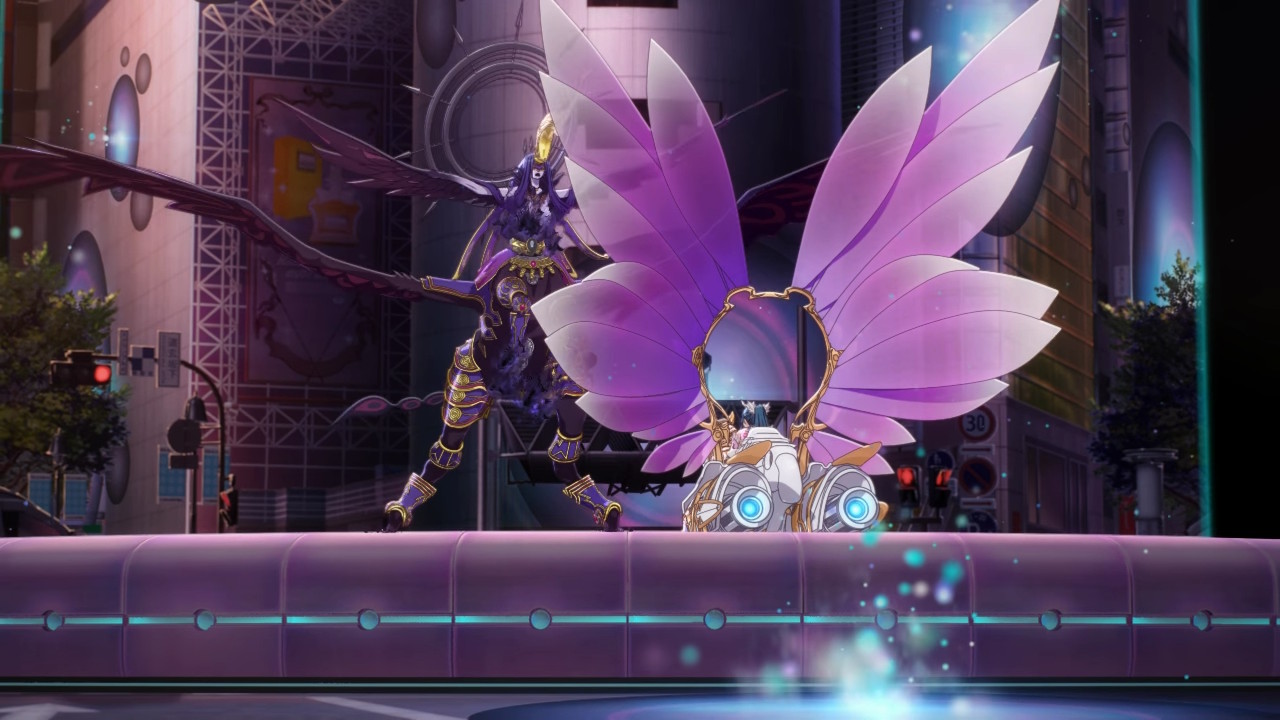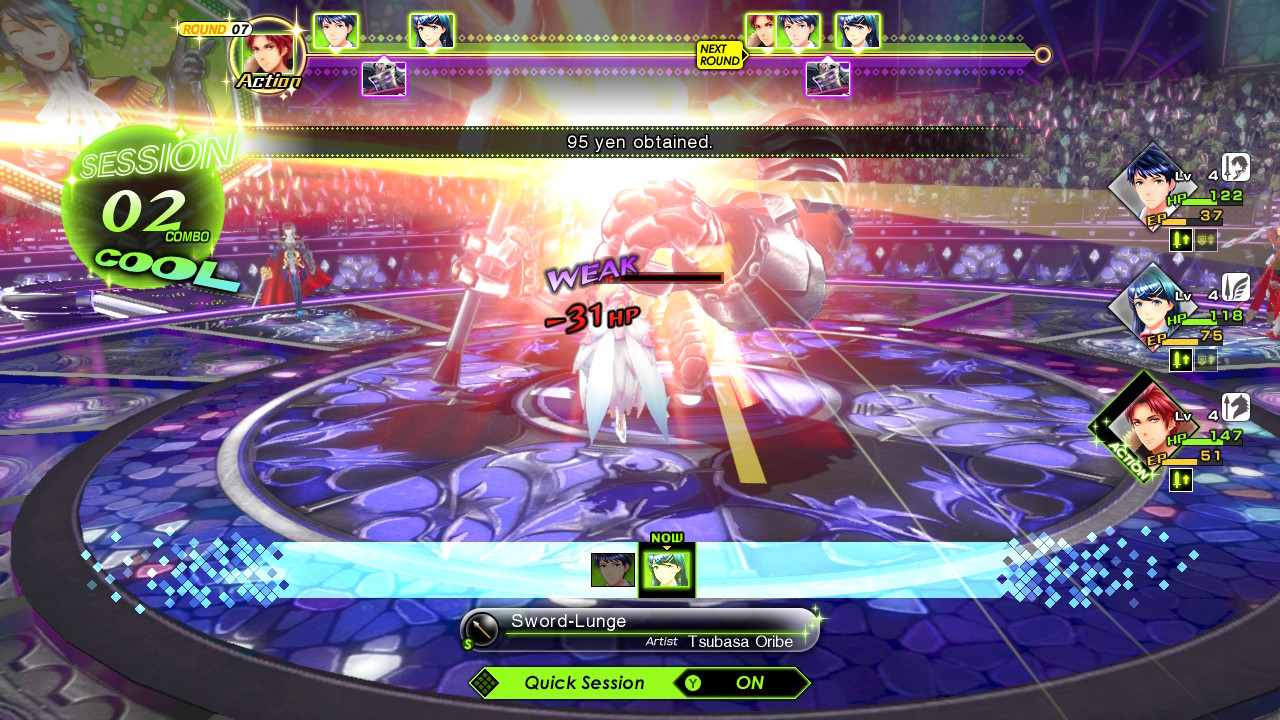Un like its handheld counterpart, the Wii U didn’t have many RPGs to its name. The 3DS had powerhouses like Fire Emblem: Awakening and hardcore niche titles like Shin Megami Tensei 4, among others in the SMT franchise. Then something changed. Atlus and Nintendo announced a project long in the works that brought both series together, Tokyo Mirage Sessions.
A few years later, the Wii U was officially dead, and the Nintendo Switch started getting most of its predecessor’s big-name titles. Tokyo Mirage Sessions #FE Encore is the latest in the line of Wii U-to-Switch ports, but how does it hold up now that Nintendo fans are desperate for console-style RPGs?
If we’re honest? Not too great.
Tokyo Mirage Sessions #FE Encore Review — Same Song and Dance
A good RPG needs at least one of three things: compelling story and/or characters, satisfying combat, or an engaging gameplay gimmick/loop. Tokyo Mirage Sessions only has one of those, and it’s not the story and characters.
Hatsune Miku will not be pleased
You play as Itsuki Aoi, a young high school student unsure what he wants to do with his future. He’s bland and inoffensive, but he truly cares for his childhood friend Tsubasa Oribe. She’s the real star here, literally and from a narrative perspective. Tsubasa wants to be an idol for a few reasons, some personal and some just because it’s fun to wear outlandish clothes and perform in front of adoring audiences.
And that’s basically the story, with a sprinkling of family drama and (very) light commentary on the cruelties and corruption of idol culture. There’s a bigger arc involving the end of the world and sucking people’s performance creativity from them, but it isn’t all that interesting.That’s okay. Not every story has to be incredibly deep or insightful, and the bigger draw is obviously supposed to the wild setting. However, it’s not enough to really make TMS shine.
There’s a handful of additional playable characters and some support characters, but you’ve probably seen all of them before. The group mom/entertainment company manager is a boozing, large-breasted 20-something, the music teacher is a large, goofy fanboy, and so on.
Like the story, that’s not always bad. Tropes can be entertaining and comfortable on their own if they’re carried out well. In Tokyo Mirage Sessions, though, there’s surprisingly little character interaction to help pull this off. Story beats move incredibly fast, and there’s no Persona or Fire Emblem-style bonding moment between friends and colleagues.
You do unlock Side Stories as you raise each character’s Stage Rank, but these pretty much just reinforce how shallow the setup is, i.e. fighting extremely low-level enemies to help a friend feel like a hero or bouncing from point to point on the map until you find a lost cat. What you’re left with is the feeling there should be something more, something that shows the friendship between the actual friends, the growth of trust between colleagues — something. Anything.
This dearth of interaction and reliance on single-layer tropes works okay for Shin Megami Tensei 4 because you still get the complex alignment system. Without that or anything to help make you care about what’s going on, Tokyo Mirage Sessions is just okay.
The Fire Emblem inclusion is a bit confusing as well. If you’ve played Shadow Dragon or Awakening, you’ll already know what the antagonists’ endgame is, but it just seems a bit… unnecessary?
There’s no real tension between the foes and heroes and equally little interaction. Even more disappointing is how that extends to your Mirages. They’re rehabilitated Mirages saved from the grip of darkness, and they’re famous Fire Emblem heroes like Caeda and Chrom.
That means they’re supposed to represent some inner portion of the hero they assist, except… they sorta don’t. Again, there isn’t enough interaction between characters to really drive home that relationship.
So, the story and characters are serviceable, but not really great. That leaves the combat — which is pretty good. It borrows from both Shin Megami Tensei‘s general setup and Fire Emblem‘s weapon weaknesses, with a key twist on SMT‘s Press-Turn System.
In SMT, if you exploit an enemy’s weakness, you get one or more additional actions. In TMS, you don’t. What you do get after the tutorials is a Session attack, which links with another party member’s skill to deal additional damage.
The options for Sessions vary depending on what skill you use and what support skills other characters have available, but chaining Sessions and dealing additional damage is key to victory — or defeat. Your enemies get Session attacks too, and on Hard mode, it’s easy to get overwhelmed before you know it. Easy and Normal don’t present much challenge, though.
You drive a regular horse? Ha. Hold my Amrita Soda.
Should you find you’re having trouble on Hard mode, Encore includes the Bloom Palace Idolasphere (which was DLC for the original) that lets you farm items granting more experience or special items. It’s great for minimizing the level grind, but in moderation. Go up an additional three or four levels, and there’s suddenly no challenge for a while.
You get Performance attacks as well, which are flashy and powerful attacks that open up once you fill your special meter. Ad-Lib performances grant special bonuses after you unlock them through Side Stories.
You don’t swap out Mirages in TMS, but you can create new weapons, called Carnage, through Unity. It’s like Fusion in Persona and SMT, but more basic. There’s much less give-and-take when creating a new Carnage. The only thing you need to consider is which skills might be most useful, and you also get many more skill slots than in SMT.
Having said that, combat and Unity do take a while to get going. It’s not until Chapter 2 when your options really open up, and you can take advantage of wider skillsets and more characters. For the first five or so hours, though, it’s easy to start getting a bit bored with what’s on offer, not least because there are so many Mirage encounters in each dungeon.
That leaves gameplay gimmicks and loops, which are, unfortunately, a bit of a letdown. The story is divided into chapters, with intermissions that offer some free time. There’s not a whole lot to do during this free time other than some rather boring side quests and then the Side Stories. However, it does offer a nice break where you can get your gear in order for the next main dungeon.
Dungeons are okay in TMS. They’re fairly basic overall, but they do end up feeling tedious thanks to their overly-lengthy size and a plethora of basic puzzles to deal with. You’ll revisit some of them for side quests, too, if you decide to take them on, which — like Persona 3 and Persona 4 — means you’ll be sick of them before too long.
The user interface and map systems are pretty obnoxious. Apart from tiny text syndrome, they suffer from unwieldy and counterintuitive controls, a drawback from having the Topic system (your phone, basically) as a menu instead of on the Wii U Game Pad. The font color and style make it hard to read even aside from size, since it’s white superimposed on light backgrounds.
There are some well done anime cutscenes in the game, and a few catchy tunes like Reincarnation. However, the overall presentation and the soundtrack are much flatter and more mundane than you’d expect from a game about idol culture and the energizing power of music. Even the battle theme remix is low-key and easily forgettable.
Finally is the Encore factor, which isn’t much. Outside the advertised new songs and included DLC, you get NPCs like Barry and Tiki joining in for Sessions. It’s a fun addition, but if you already played the Wii U version and aren’t dying to play the game again in portable mode, just know it doesn’t add anything really substantial over the original.
Tokyo Mirage Sessions #FE Encore: The Bottom Line
Pros
- Unique setting and premise
- Fun combat and combat mechanics
- Good, light fanservice for SMT and Fire Emblem fans
- Accessible RPG for newcomers
Cons
- Forgettable story and soundtrack
- Not much character interaction
- Crummy UI
- Not much point in the mashup
- Tedious dungeons
Overall, Tokyo Mirage Sessions feels like a missed opportunity, and the Encore version even more so. The makings for something really great and unique are here, but in trying to be so many things at once, it ultimately doesn’t manage to be anything in particular.
A remake or port seems like the ideal way to add some extra meat to the game, shoring up its weak points and trying to build on its strengths. Unfortunately, it doesn’t.
There are definitely better RPGs on the Switch. If you don’t mind the negatives, though, you’ve got a solid B-tier RPG with a premise you won’t find anywhere else and an excellent combat system.
[Note: A copy of Tokyo Mirage Sessions #FE Encore was provided by Nintendo for the purpose of this review.]













Published: Jan 26, 2020 09:22 pm